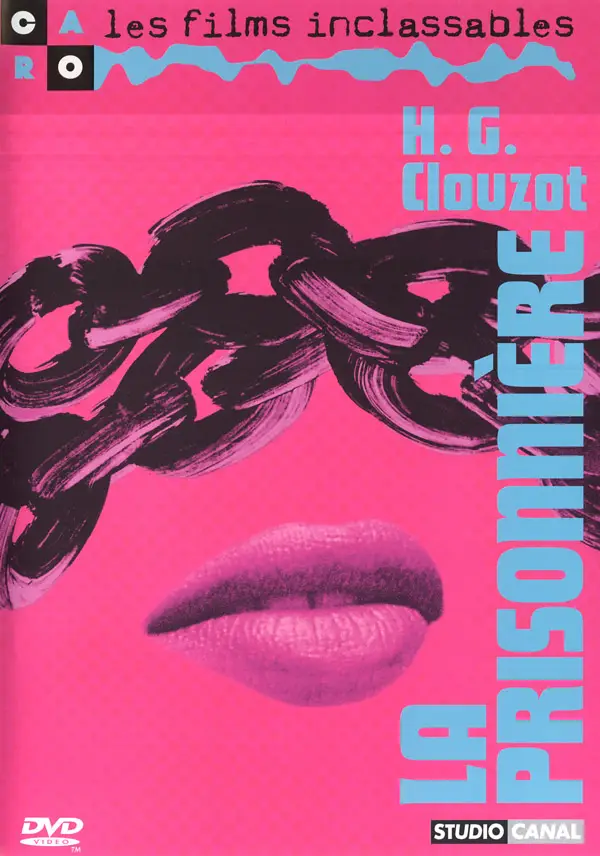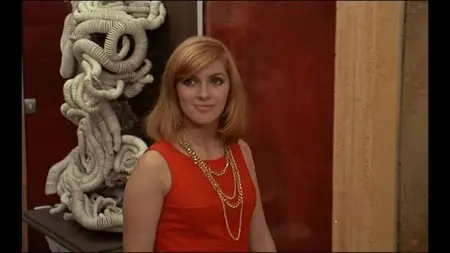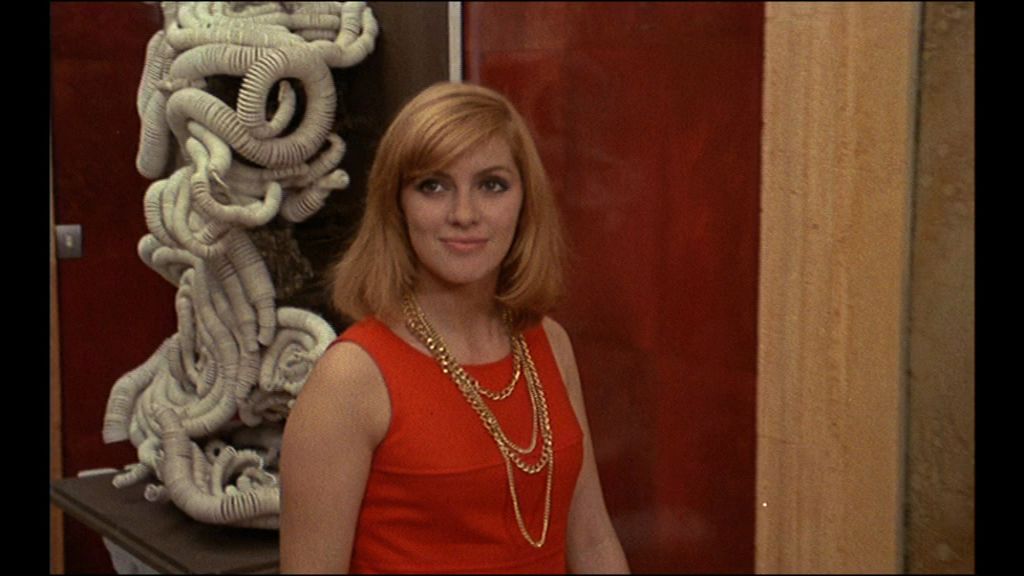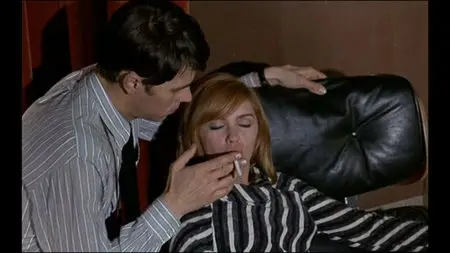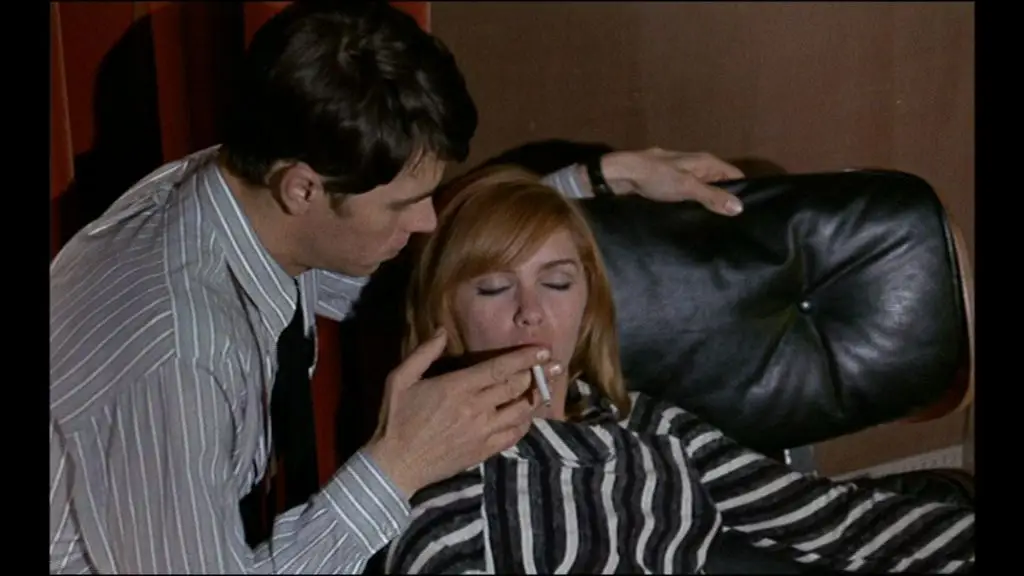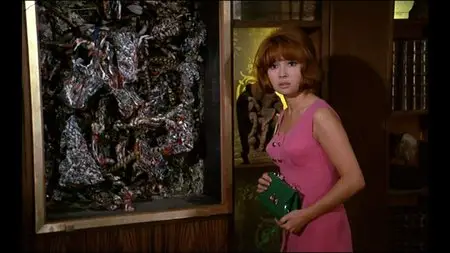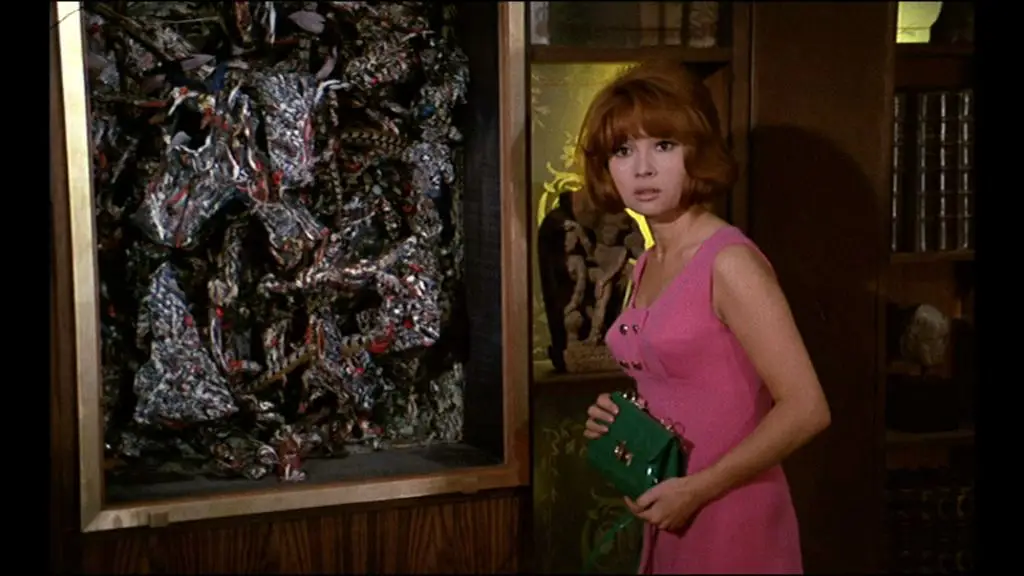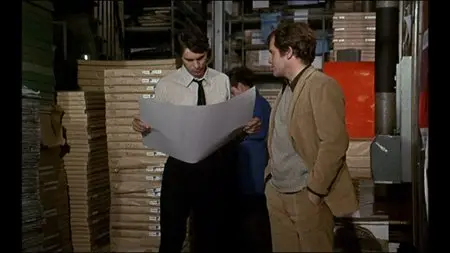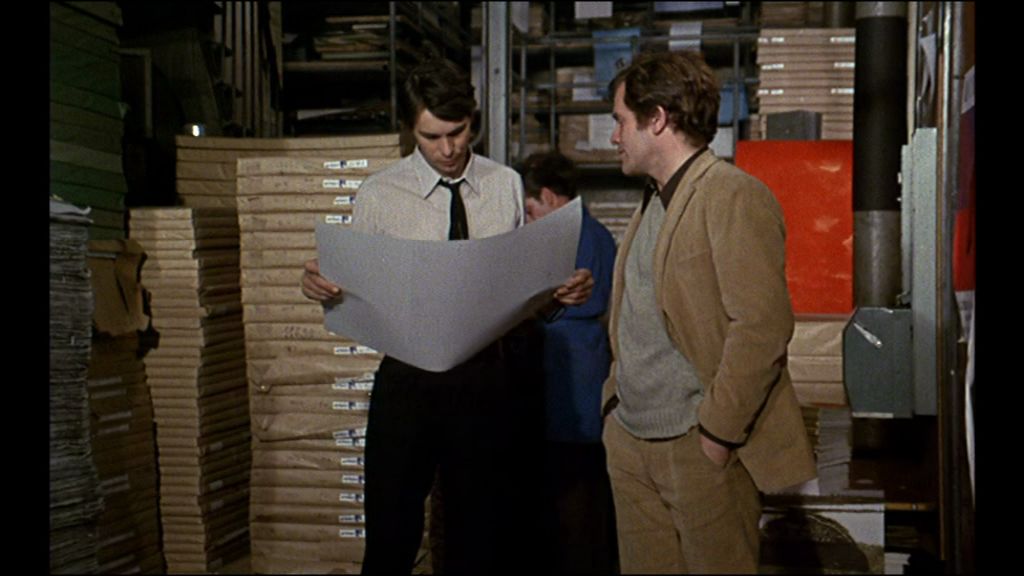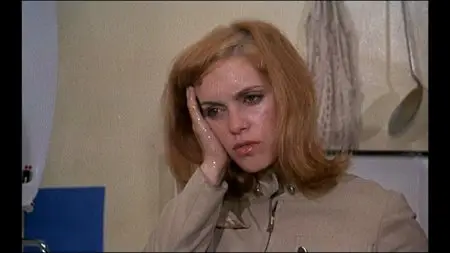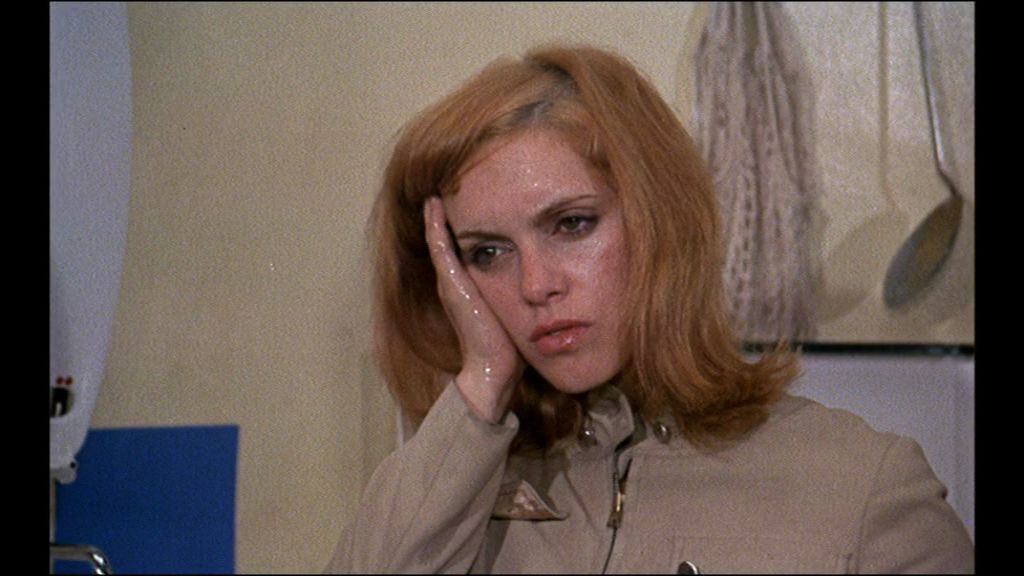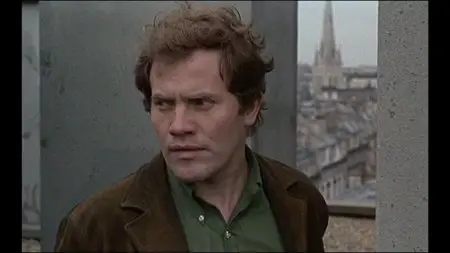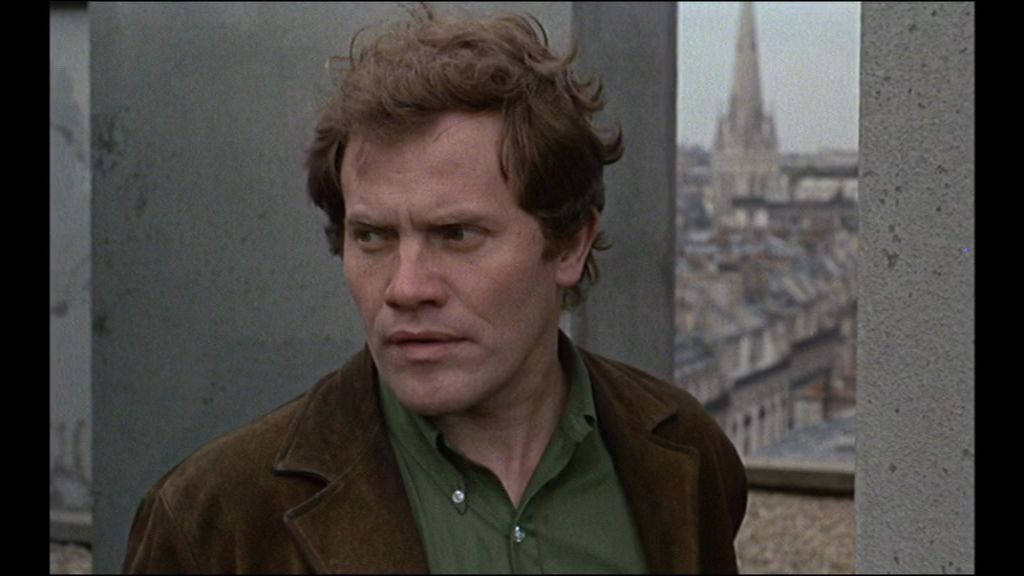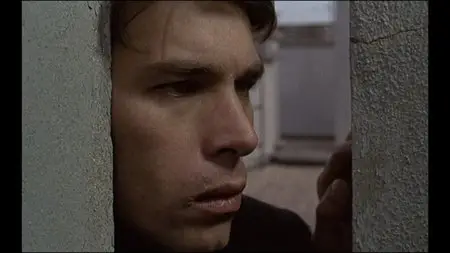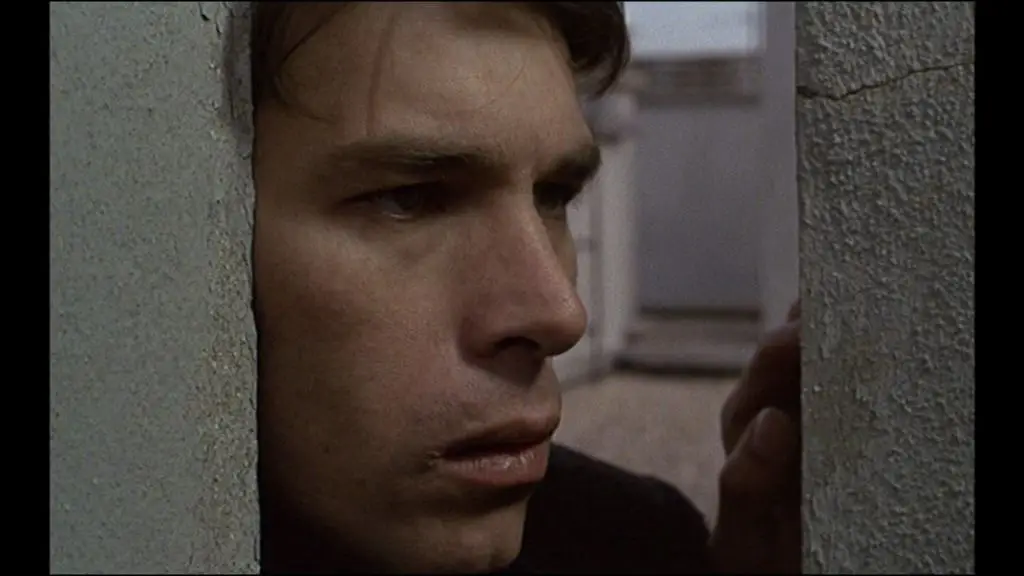La prisonnière (1968)
A Film by Henri-Georges Clouzot
DVD9 (VIDEO_TS) Custom subs | PAL 16:9 (720x576) | Script (2 PDFs) | 01:41:40 | 6,53 Gb
Audio: French AC3 2.0 @ 192 Kbps | Subs: English
Genre: Drama, Art-house | France, Italy
A Film by Henri-Georges Clouzot
DVD9 (VIDEO_TS) Custom subs | PAL 16:9 (720x576) | Script (2 PDFs) | 01:41:40 | 6,53 Gb
Audio: French AC3 2.0 @ 192 Kbps | Subs: English
Genre: Drama, Art-house | France, Italy
Stanislas Hassler blazes the development of modern art in his gallery, packed with works of surprising shapes, colours and textures, and where exhibitions turn into media events. Gilbert Moreau is one of the artists whose sculptures are on display in the gallery. His wife, Josée, is intrigued by the stern Stanislas, who devotes his free time to photography in an apartment that highlights his sophisticated artistic tastes. But besides enlarged pictures of calligraphic samples, Stanislas is amassing a collection of photographs that reveal a disturbed character. So why would Josée endanger her mature relationship with Gilbert for the morbid observation of Stanislas's hidden personality?
IMDB
With the fragments of Henri-Georges Clouzot's never-completed L'enfer (1964) finally gathered together and released as part of the making-of/unmaking-of documentary Inferno (2009), now seems a good time to revisit Clouzot's last feature, the criminally neglected La prisonnière (1968).
Made at the urging of admirer François Truffaut, this perverse romance utilized many of the pop-art gimmicks and psychedelic visual tricks Clouzot had planned to use in the abortive L'enfer, but in the four years since that project had rolled over and died, nearly taking its director with it, times had changed, and Clouzot's experiments no longer looked as startling as they would have in '64. (Plus, L'enfer would have been a black and white film whose naturalistic style would have been violently ruptured by bursts of hallucinatory color.) In fact, it probably looked as if the old man was straining to be hip and counter-cultural. The film was passed over with a degree of embarrassment.
But what a fascinating film it is!
Elizabeth Wiener is our reticent, sulky, very convincing leading lady. In reality the daughter of musician Jean, the teleporting pianist who crops up in the background of every damn scene in Jacques Rivette's Duelle, in which Wiener also appears as handmaiden to a goddess, she still acts, and sings in a band, but never made it to the big time. Here she seems like a real discovery, with her natural beauty and slightly guarded attitude. Lured away from her kinetic artist partner (it's that kind of movie), Bernard Fresson, by the sickly charms of gallery owner Laurent Tertzieff, she finds herself plunged into his world of S&M mind games.
On the one hand, the movie could be a plea for tolerance on behalf of sadists everywhere—Clouzot himself was notoriously difficult and tyrannical, one of those directors (Kubrick, Polanski) who insists on real needles penetrating real skin for injection scenes—and from the rest of his work and his attitudes to crew, actors and audiences, sadism does seem to be part of his bag. But then, he doesn't make it look too enticing. Tertzieff's character craves control, and the kinky pleasures are well communicated, but he's mortally afraid of romance and commitment and conventional happiness, and flees a perfectly delightful weekend by the sea when he finds things getting too normal.
Wiener, for her part, is disturbed at the emotions aroused by Tertzieff's art-pornography (Hans Bellmer sculptures and chained nudes) and fantasies and role-play and photographic sessions. Lovable sixties pop-tart Dany Carrel, who looks sorta Japanese but isn't, turns up as a model, initially wearing a big button that reads J'avais les Problemes! then stripping to panties and a transparent mac. Wiener, currently engaged as a film editor working on a documentary about domestic abuse, has trouble differentiating between role-play and reality. She knows this stuff isn't supposed to be pleasurable and, as a modern liberated woman, she's not supposed to be into it. Tertzieff uses her guilt and shame as part of the humiliation, part of the turn-on. In one extraordinary scene, under his tutelage, she "directs" an imaginary model to strip and crawl. It's intense, creepy, sick, and erotic.
Perhaps the story, a virtual three-hander, is rather truncated by the addition of Clouzot's jumbo hallucination scene, which substitutes for a third act and arguably doesn't resolve anything. But it's an incredible sequence in itself, much more extreme and radical than conventional freak-outs of the era, in part because of the fact it substitutes for a narrative conclusion. Cinematographer Andreas Winding (Play Time) and production designer Jacques Saulnier (Last Year at Marienbad) provided Clouzot with miles of crazy footage, with no plan how to use it, but it's spliced together with magnificent abandon, forming a clamorous, self-destruct climax of fashion-shoot imagery, torture chamber atmospherics, and kinetic art gimmickry—the emphasis of the purely imagistic over all narrative demands relates more to Clouzot's The Picasso Mystery than to anything else in his oeuvre. The only justification offered by the rest of the film is the art-world background and the obsessive color-coordination of the whole production, which suggests that Clouzot could have been the greatest color filmmaker of the age.David Cairns, MUBI
Download:
All Thanks goes to Original uploader.http://www.filesonic.com/file/1525857681/Prisoner.1968.AH.part01.rar
http://www.filesonic.com/file/1525867111/Prisoner.1968.AH.part02.rar
http://www.filesonic.com/file/1525863261/Prisoner.1968.AH.part03.rar
http://www.filesonic.com/file/1525863451/Prisoner.1968.AH.part04.rar
http://www.filesonic.com/file/1525863441/Prisoner.1968.AH.part05.rar
http://www.filesonic.com/file/1525866081/Prisoner.1968.AH.part06.rar
http://www.filesonic.com/file/1525866251/Prisoner.1968.AH.part07.rar
http://www.filesonic.com/file/1525866241/Prisoner.1968.AH.part08.rar
http://www.filesonic.com/file/1525870941/Prisoner.1968.AH.part09.rar
http://www.filesonic.com/file/1525871111/Prisoner.1968.AH.part10.rar
http://www.filesonic.com/file/1525867011/Prisoner.1968.AH.part11.rar
http://www.filesonic.com/file/1525867291/Prisoner.1968.AH.part12.rar
http://www.filesonic.com/file/1525871071/Prisoner.1968.AH.part13.rar
http://www.filesonic.com/file/1525867351/Prisoner.1968.AH.part14.rar
http://www.filesonic.com/file/1525869401/Prisoner.1968.AH.part15.rar
http://www.filesonic.com/file/1525869771/Prisoner.1968.AH.part16.rar
http://www.filesonic.com/file/1525869801/Prisoner.1968.AH.part17.rar
http://www.wupload.com/file/67618069/Prisoner.1968.AH.part01.rar
http://www.wupload.com/file/67618217/Prisoner.1968.AH.part02.rar
http://www.wupload.com/file/67618408/Prisoner.1968.AH.part03.rar
http://www.wupload.com/file/67621709/Prisoner.1968.AH.part04.rar
http://www.wupload.com/file/67618574/Prisoner.1968.AH.part05.rar
http://www.wupload.com/file/67621756/Prisoner.1968.AH.part06.rar
http://www.wupload.com/file/67618727/Prisoner.1968.AH.part07.rar
http://www.wupload.com/file/67620138/Prisoner.1968.AH.part08.rar
http://www.wupload.com/file/67624901/Prisoner.1968.AH.part09.rar
http://www.wupload.com/file/67621918/Prisoner.1968.AH.part10.rar
http://www.wupload.com/file/67624680/Prisoner.1968.AH.part11.rar
http://www.wupload.com/file/67621794/Prisoner.1968.AH.part12.rar
http://www.wupload.com/file/67624671/Prisoner.1968.AH.part13.rar
http://www.wupload.com/file/67621951/Prisoner.1968.AH.part14.rar
http://www.wupload.com/file/67625024/Prisoner.1968.AH.part15.rar
http://www.wupload.com/file/67621916/Prisoner.1968.AH.part16.rar
http://www.wupload.com/file/67624849/Prisoner.1968.AH.part17.rar
http://www.uploadstation.com/file/6EGEkHM/Prisoner.1968.AH.part01.rar
http://www.uploadstation.com/file/z3yXkRc/Prisoner.1968.AH.part02.rar
http://www.uploadstation.com/file/MBZSnmR/Prisoner.1968.AH.part03.rar
http://www.uploadstation.com/file/GKmQnTb/Prisoner.1968.AH.part04.rar
http://www.uploadstation.com/file/kdh54cU/Prisoner.1968.AH.part05.rar
http://www.uploadstation.com/file/TkRC5Gq/Prisoner.1968.AH.part06.rar
http://www.uploadstation.com/file/UPyWKM8/Prisoner.1968.AH.part07.rar
http://www.uploadstation.com/file/UU38Ube/Prisoner.1968.AH.part08.rar
http://www.uploadstation.com/file/ZeXWhTB/Prisoner.1968.AH.part09.rar
http://www.uploadstation.com/file/KszZFmb/Prisoner.1968.AH.part10.rar
http://www.uploadstation.com/file/9ryJcsK/Prisoner.1968.AH.part11.rar
http://www.uploadstation.com/file/xpGYu4q/Prisoner.1968.AH.part12.rar
http://www.uploadstation.com/file/HRxdBdc/Prisoner.1968.AH.part13.rar
http://www.uploadstation.com/file/HKwK8u8/Prisoner.1968.AH.part14.rar
http://www.uploadstation.com/file/pzERUfU/Prisoner.1968.AH.part15.rar
http://www.uploadstation.com/file/64SFp5M/Prisoner.1968.AH.part16.rar
http://www.uploadstation.com/file/38wdAKw/Prisoner.1968.AH.part17.rar
http://filepost.com/files/5b6amb7a/Prisoner.1968.AH.part01.rar
http://filepost.com/files/a2a59e75/Prisoner.1968.AH.part02.rar
http://filepost.com/files/5ce2a758/Prisoner.1968.AH.part03.rar
http://filepost.com/files/af22fc82/Prisoner.1968.AH.part04.rar
http://filepost.com/files/6ff33a48/Prisoner.1968.AH.part05.rar
http://filepost.com/files/camead68/Prisoner.1968.AH.part06.rar
http://filepost.com/files/9bc37d29/Prisoner.1968.AH.part07.rar
http://filepost.com/files/mmcm6m23/Prisoner.1968.AH.part08.rar
http://filepost.com/files/2d11c3c6/Prisoner.1968.AH.part09.rar
http://filepost.com/files/acce96d4/Prisoner.1968.AH.part10.rar
http://filepost.com/files/9c496d8c/Prisoner.1968.AH.part11.rar
http://filepost.com/files/44c7c1mf/Prisoner.1968.AH.part12.rar
http://filepost.com/files/f4185b7d/Prisoner.1968.AH.part13.rar
http://filepost.com/files/m329c633/Prisoner.1968.AH.part14.rar
http://filepost.com/files/f82dm4db/Prisoner.1968.AH.part15.rar
http://filepost.com/files/e27e9891/Prisoner.1968.AH.part16.rar
http://filepost.com/files/fem61ffm/Prisoner.1968.AH.part17.rar
http://www.fileserve.com/file/Nuf2k24/Prisoner.1968.AH.part01.rar
http://www.fileserve.com/file/vUmeSes/Prisoner.1968.AH.part02.rar
http://www.fileserve.com/file/ypaVNqr/Prisoner.1968.AH.part03.rar
http://www.fileserve.com/file/QXRkxVg/Prisoner.1968.AH.part04.rar
http://www.fileserve.com/file/4jVT3BY/Prisoner.1968.AH.part05.rar
http://www.fileserve.com/file/9Kms6q3/Prisoner.1968.AH.part06.rar
http://www.fileserve.com/file/bA9geAf/Prisoner.1968.AH.part07.rar
http://www.fileserve.com/file/n3HHw2k/Prisoner.1968.AH.part08.rar
http://www.fileserve.com/file/CVvaFCg/Prisoner.1968.AH.part09.rar
http://www.fileserve.com/file/CcFuRDR/Prisoner.1968.AH.part10.rar
http://www.fileserve.com/file/KsQRyNf/Prisoner.1968.AH.part11.rar
http://www.fileserve.com/file/uVqV2Sk/Prisoner.1968.AH.part12.rar
http://www.fileserve.com/file/46E56pM/Prisoner.1968.AH.part13.rar
http://www.fileserve.com/file/sWQyz28/Prisoner.1968.AH.part14.rar
http://www.fileserve.com/file/NXVG85q/Prisoner.1968.AH.part15.rar
http://www.fileserve.com/file/b3ch5zH/Prisoner.1968.AH.part16.rar
http://www.fileserve.com/file/AXqfp7x/Prisoner.1968.AH.part17.rar
Interchangable links.
No More Mirrors.



